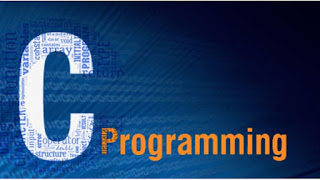Local Environment Setup
If you want to set up your environment for C programming language,
you need the following two software tools available on your computer,
(a) Text Editor and (b) The C Compiler.
Text Editor
This will be used to type your program. Examples of few a editors
include Windows Notepad, OS Edit command, Brief, Epsilon, EMACS, and vim
or vi.
The name and version of text editors can vary on different operating
systems. For example, Notepad will be used on Windows, and vim or vi can
be used on windows as well as on Linux or UNIX.
The files you create with your editor are called the source files and
they contain the program source codes. The source files for C programs
are typically named with the extension "
.c".
Before starting your programming, make sure you have one text editor
in place and you have enough experience to write a computer program,
save it in a file, compile it and finally execute it.
The C Compiler
The source code written in source file is the human readable source
for your program. It needs to be "compiled", into machine language so
that your CPU can actually execute the program as per the instructions
given.
The compiler compiles the source codes into final executable
programs. The most frequently used and free available compiler is the
GNU C/C++ compiler, otherwise you can have compilers either from HP or
Solaris if you have the respective operating systems.
The following section explains how to install GNU C/C++ compiler on
various OS. We keep mentioning C/C++ together because GNU gcc compiler
works for both C and C++ programming languages.
Installation on UNIX/Linux
If you are using
Linux or UNIX, then check whether GCC is installed on your system by entering the following command from the command line −
$ gcc -v
If you have GNU compiler installed on your machine, then it should print a message as follows −
Using built-in specs.
Target: i386-redhat-linux
Configured with: ../configure --prefix=/usr .......
Thread model: posix
gcc version 4.1.2 20080704 (Red Hat 4.1.2-46)
If GCC is not installed, then you will have to install it yourself using the detailed instructions available at
http://gcc.gnu.org/install/
This tutorial has been written based on Linux and all the given
examples have been compiled on the Cent OS flavor of the Linux system.
Installation on Mac OS
If you use Mac OS X, the easiest way to obtain GCC is to download the
Xcode development environment from Apple's web site and follow the
simple installation instructions. Once you have Xcode setup, you will be
able to use GNU compiler for C/C++.
Xcode is currently available at
developer.apple.com/technologies/tools/.
Installation on Windows
To install GCC on Windows, you need to install MinGW. To install MinGW, go to the MinGW homepage,
www.mingw.org,
and follow the link to the MinGW download page. Download the latest
version of the MinGW installation program, which should be named
MinGW-<version>.exe.
While installing Min GW, at a minimum, you must install gcc-core,
gcc-g++, binutils, and the MinGW runtime, but you may wish to install
more.
Add the bin subdirectory of your MinGW installation to your
PATH environment variable, so that you can specify these tools on the command line by their simple names.
After the installation is complete, you will be able to run gcc, g++,
ar, ranlib, dlltool, and several other GNU tools from the Windows
command line.





